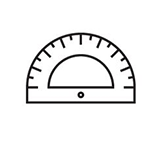카우딥테릭스(Caudipteryx)
| 국내/해외배송 | |
|---|---|
| 배송비 방법 | 택배 |
| 배송비 | 4,000원 (50,000원 이상 구매 시 무료) |
| 수량 |
|
| 상품 정보 | 가격 | 삭제 |
|---|---|---|
| [총 상품금액(수량)] 0 (0개) | ||
- 일반명 : 카우딥테릭스
- 학명 Scientific Name : Caudipteryx zoui
- 형태 Mode : 판형 Board
- 시대 Age : 전기백악기 Early Cretaceous
- 크기 L×W×H (m) : 0.8m×0.4m×0.1m
- 원산지 Location : 중국 요녕 Liaoning
Caudipteryx
Caudipteryx (which means "tail feather") is a genus of peacock-sized theropod dinosaurs that lived in the Barremian age of the early Cretaceous Period (about 127 million years ago). They were feathered and remarkably birdlike in their overall appearance. Two species have been described; C. zoui (the type species), in 1998, and C. dongi, in 2000.
Caudipteryx fossils were first discovered in the Yixian Formation of the Sihetun area of Liaoning
Anatomy
Caudipteryx, like many other maniraptorans, has an interesting mix of primitive and bird – like anatomical features.
Caudipteryx had a short, boxy skull with a beak – like snout that retained only a few tapered teeth in the front of the upper jaw. It had a stout trunk, long legs and was probably a swift runner. On the hands it had symmetrical, pennaceous, feathers that had vanes and barbs, and that measured between 15-20 centimeters (6-8 inches). These primary feathers were arranged in a wing – like fan along the second finger, just like primary feathers of birds and other maniraptorans. No fossil of Caudipteryx preserves any secondary feathers attached to the forearms, as found in dromaeosaurids, Archaeopteryx and modern birds. Either these arm feathers are not preserved, or they were not present on Caudipteryx in life. An additional fan of feathers existed on its short tail. The shortness and symmetry of the feathers, and the shortness of the arms relative to the body size, indicate that Caudipteryx could not fly. Caudipteryx is thought to have been an omnivore. In at least two specimens of Caudipteryx (NGMC 97 4 A and NGMC 97 9 A), gastroliths are preserved. As in some herbivorous dinosaurs, the avialan Sapeornis, and modern birds, these gastroliths remain in the position where the animals’ gizzards would have been.[1] Caudipteryx has a short, distally stiffened, tail with few vertebrae, like in birds and other oviraptorosaurs. It has a primitive pelvis and shoulder, and primitive skull details in the quadratojugal, squamosal, quadrate, jugal, and mandibular fenestra (in the cheek, jaw, and jaw joint). It has a hand skeleton with a reduced third finger, like that of primitive birds and the oviraptorid Ingenia. Caudipteryx had uncinate processes on the ribs, birdlike teeth, a first toe which may or may not be partially reversed, and overall body proportions that are comparable to those of modern flightless birds.
Implications
The discovery of Caudipteryx led to many intensive studies on and debate over the relationship of birds and dinosaurs. The possible positions in the debate can be summarized as follows: Caudipteryx is either a member of the Oviraptorosauria, or a bird, or both, and birds are either dinosaurs or they are not. (See the rest of this section and Phylogeny, below).
Because Caudipteryx has clear and unambiguously pennaceous feathers, like modern birds, and because several cladistic analyses have consistently recovered it as a nonavian, oviraptorid, dinosaur, it provided, at the time of its description, the clearest and most succinct evidence that birds evolved from dinosaurs. Lawrence Witmer stated:
“The presence of unambiguous feathers in an unambiguously nonavian theropod has the rhetorical impact of an atomic bomb, rendering any doubt about the theropod relationships of birds ludicrous.”
However, not all scientists agreed that Caudipteryx was unambiguously non-avian, and some of them continued to doubt that general consensus. Paleontologists like Alan Feduccia, who opposes the theory that birds are theropods, sees Caudipteryx as a flightless bird unrelated to dinosaurs. Jones et al. (2000) found that Caudipteryx was a bird based on a mathematical comparison of the body proportions of flightless birds and non-avian theropods. Dyke and Norell (2005) criticized this result for flaws in their mathematical methods, and produced results of their own which supported the opposite conclusion.
Other researchers not normally involved in the debate over bird origins, such as Zhou, acknowledged that the true affinities of Caudipteryx were debatable
Phylogenetic position
The consensus view, based on several cladistic analyses, is that Caudipteryx is a basal (primitive) member of the Oviraptoridae, and the oviraptorids are nonavian theropod dinosaurs. Incisivosaurus is the only oviraptorid that is more primitive.
Halszka Osmolska et al. (2004) ran a cladistic analysis that came to a different conclusion. They found that the most birdlike features of oviraptorids actually place the whole clade within Aves itself, meaning that Caudipteryx is both an oviraptorid and a bird. In their analysis, birds evolved from more primitive theropods, and one lineage of birds became flightless, re-evolved some primitive features, and gave rise to the oviraptorids. This analyis was persuasive enough to be included in paleontological textbooks like
Others, such as Stephen Czerkas and Larry Martin have concluded that Caudipteryx is not a theropod dinosaur at all. They believe that Caudipteryx, like all maniraptorans, is a flightless bird, and that birds evolved from non – dinosaurian archosaurs.

















 확대보기 및 상세정보
확대보기 및 상세정보